October 31, 2014
Initiatives for Explaining the Fukushima Daiichi Nuclear Disaster in a Simple Manner
Keywords: Newsletter Nuclear Power
JFS Newsletter No.146 (October 2014)
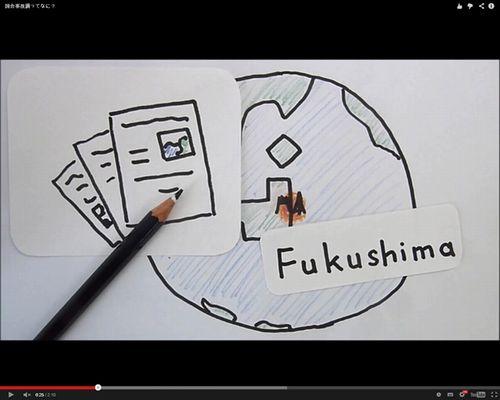
Source: The Simplest NAIIC Website
The Fukushima Nuclear Accident Independent Investigation Commission (NAIIC) was established by the National Diet of Japan in December 2011 to investigate the accident at the Fukushima Daiichi Nuclear Power Plant, owned by Tokyo Electric Power Co. (TEPCO). The accident occurred following the huge earthquake and tsunami on March 11, 2011 off the Pacific coast of Japan's northeastern Tohoku region. The NAIIC was independent from any parties connected with the accident, such as the government and TEPCO, and its members included Chairman Kiyoshi Kurokawa (Professor Emeritus, University of Tokyo) and nine commissioners with knowledge and experience in relevant fields.
Established in accordance with the NAIIC Act, this Commission was charged with investigating the circumstances and causes of the nuclear accident and making proposals on measures and policies to prevent the recurrence of nuclear plant accidents and to minimize damage from any accidents that do occur. Chairman Kurokawa said at a press conference, "We want to make it an investigation of the people, by the people, and for the people. We hope to restore the world's confidence in Japan."
Why did the accident occur? What background factors to the accident were there? What will be needed to prevent recurrences? To answer these questions, the NAIIC conducted a total of 900 hours of interviews with 1,167 people involved with the accident and a questionnaire survey of more than 10,000 residents affected by the disaster. It also requested over 2,000 documents from TEPCO and government regulatory agencies. Videos of all meetings conducted by the NAIIC have been released. They are available with simultaneous interpretation in English, and can be seen at the following website, where they have been archived:
http://warp.da.ndl.go.jp/info:ndljp/pid/3856371/naiic.go.jp/en/resources/
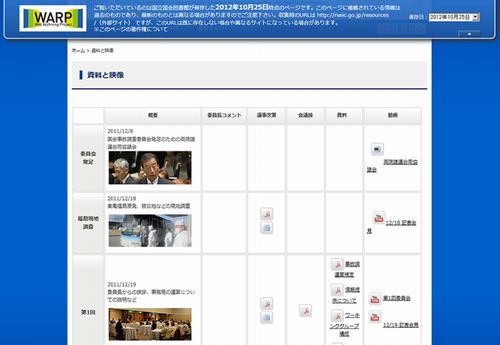
Internet archive: videos and other materials of all meetings conducted by NAIIC
Before being dissolved in July 2012, the NAIIC compiled a report that concluded the Fukushima nuclear power plant accident was a man-made disaster. The report (both in Japanese and English) and proceedings are preserved at the National Diet Library.
http://warp.da.ndl.go.jp/info:ndljp/pid/3856371/naiic.go.jp/en/
The American Association for the Advancement of Science, which publishes Science magazine, awarded Chairman Kurokawa the AAAS Award for Scientific Freedom and Responsibility in 2012.
Seven recommendations, including the establishment of a permanent committee in the National Diet to deal with issues regarding nuclear power, were included in the report, but the National Diet was slow to respond. It finally established the Special Committee on Nuclear Affairs in the House of Representatives in January 2013, six months after the report was submitted. This, however, has not served as a driving force.
Meanwhile, in the autumn of 2012, some former NAIIC staff members and students voluntarily established a group called "The Simplest Explanation of The National Diet of Japan Fukushima Nuclear Accident Independent Investigation Commission Report." Since it is difficult for ordinary people to deal with the 600-page NAIIC report, this group's aim was to explain it in an easily understandable manner.
http://naiic.net/en/
Satoshi Ishibashi, former assistant to the chairman of NAIIC and former NAIIC project leader, founded this project. The project's website provides the following explanation (partially reworded here).
---------------------------------------
We launched the project for "The Simplest NAIIC" in September 2012. At that time, we had 18 members -- young professionals who had engaged in preparing the Diet Report of NAIIC, working adults and university students -- taking part in this project. In June 2013, we renamed the organization "The Simplest Explanation of The National Diet of Japan Fukushima Nuclear Accident Independent Investigation Commission Report" and continued our activities. A high school student team was launched in the autumn of 2013. As of January 2014, more than 1,000 people have participated in our activities.
For the future of Japan, we believe that it is extremely important to learn from the Fukushima nuclear accident, which will most likely appear in world history textbooks in the future. It is our goal to face the facts of nuclear accidents directly by having thorough dialogues and discussions, and to connect with sensible people who want to make good decisions and choices for the future of Japan. We hope the following five questions will be debated and discussed in Japan.
- What happened during the Fukushima Nuclear Power Plant accident?
- What can be learned from the Fukushima Nuclear Power Plant accident?
- What should we retain, and what must we change?
- How many options are on the table, and what values will our decisions promote?
- What are we going to do in the short- and long-term perspectives?
In order to share what happened during the Fukushima nuclear accident and what has been learned from it with as many people as possible, we are now engaged in creating opportunities and venues for offering information and holding discussions.
We want junior and senior high school students, college students and young adults, who will be responsible for our future, to participate in these discussions. The National Diet Report says, "the Fukushima Nuclear Power Plant accident is not over. We, the Committee of Diet Report, believe that it is the mission of legislators who were chosen by citizens and of every individual in the country to make an effort to reform." Let's think together about the duties and missions of each individual.
---------------------------------------
The project's website introduces "The Simplest NAIIC." It describes the NAIIC STORY BOOK, one facet of the project, which has the following four sections.
- The Nuclear Power Plant Accident and Future Concerns
- Regulatory Capture
- Human Casualties of the Nuclear Power Plant Accident
- Reading the NAIIC Repot
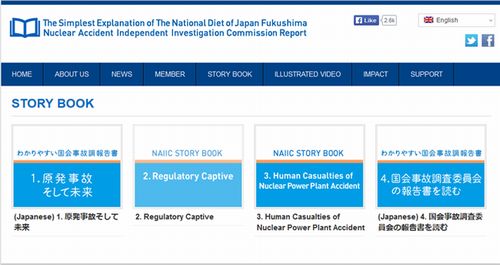
Source: The Simplest NAIIC Website
Also on the website are six short, simple illustrated video clips. The combined time of all the clips is only 16 minutes and 27 seconds. Through these clips, viewers can learn about the NAIIC, the Fukushima nuclear accident, what was done after the accident and social issues regarding nuclear energy.
http://naiic.net/en/iv
The six video clips address the following questions:
- What is the NAIIC?
- Was the nuclear accident preventable?
- What happened inside the nuclear plant?
- What should have been done after the accident?
- Could the damage have been contained?
- What issues are there regarding nuclear energy?
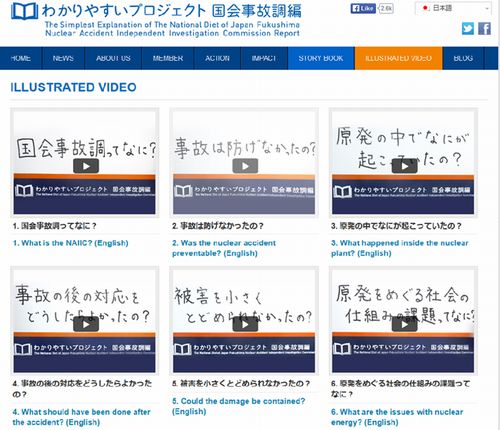
Source: The Simplest NAIIC Website
In addition, this project holds workshops and lecture meetings, seminars and lectures at universities, and reading sessions where participants read the NAIIC report in turns. It also implements educational projects and holds lectures at junior and senior high schools.
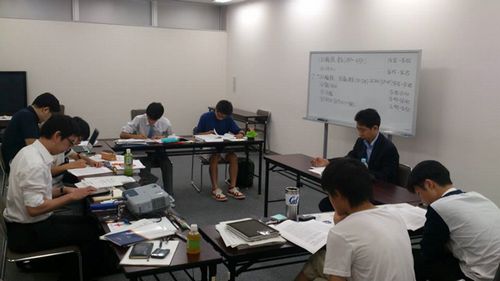
Reading session
Copyright The Simplest NAIIC All Rights Reserved.
A senior high school student team was launched in April 2014 as a new aspect of the project. Their activities include reading sessions in which they read a part of the report together for about 30 to 40 minutes, and then share their thoughts or indicate which part of the report impressed them; and blog postings of articles which present compilations of interviews with various experts and intellectuals the senior high school students conducted on their own. The team gave a presentation on October 27, 2014 at the 3rd Reference Group Meeting on Nuclear & Radiological Emergency Preparedness -- an international conference in Fukushima hosted by the Japanese Red Cross Society and the International Federation of Red Cross and Red Crescent Societies to establish action guidelines in preparation for nuclear disasters.
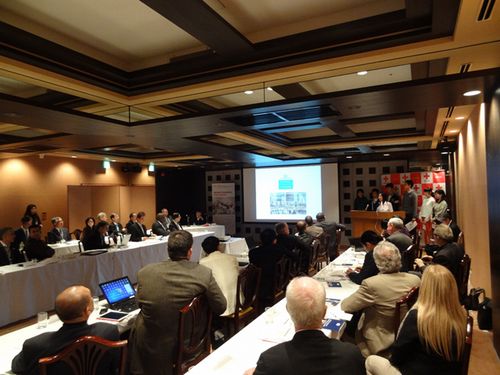
Presentation at the 3rd Reference Group Meeting
on Nuclear & Radiological Emergency Preparedness
Copyright The Simplest NAIIC All Rights Reserved.
In all activities sponsored by this project, three ground rules are observed:
- No questioning of positions and ideas
- Pursuit of reasons for problems
- Interactive discussions (listening, learning and dialogues), instead of debates (simply making claims and counter claims)
Ishibashi made the following remarks during my interview with him. "Our attitude should be one of learning as much as possible from the accident, and it was this attitude that the National Diet of Japan Fukushima Nuclear Independent Investigation Commission took, but people are still stuck in the same old mindset even after the report was published. I discussed this issue with my colleagues and friends because I wanted as many people as possible to know that not everyone is like that. The starting point is looking at the facts rather than debating, and our motto is 'deepening inner reflection rather than attacking others.'"
Participants in the project's activities hold dialogues calmly without questioning whether their conversation partners are for or against nuclear energy. At the same time, the project is undergoing a trial-and-error process in terms of how to overcome the fixed perceptions that each person has, such as "the nuclear energy issue is too complicated to understand if you are not an expert" and "we should not interfere in the domain of experts," and the brain-freeze people experience as a result of these perceptions. It is also grappling with the problem of getting people who have no interest in nuclear energy to think about it. "It is important to keep asking National Diet members what they intend to do about the points and suggestions made in the report," says Ishibashi.
As people's interest in and awareness of the nuclear plant accident continues to fade, I have high hopes for the Simplest NAIIC Project as a means of encouraging each individual to face this issue and continue to keep it in mind. I also hope that people outside Japan will view the illustrated English video clips and storybooks on the project's website, in order to learn lessons from the Fukushima nuclear accident and utilize those lessons for themselves.
http://naiic.net/en/
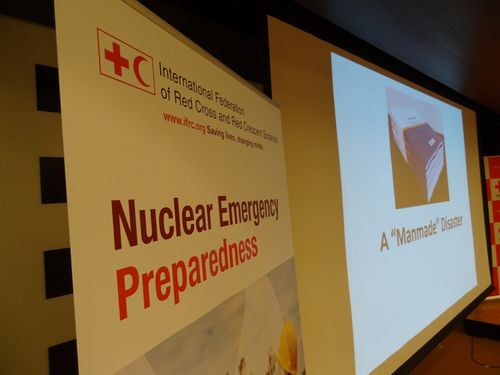
Copyright The Simplest NAIIC All Rights Reserved.
Written by Junko Edahiro
Related
"JFS Newsletter"
- 'Good Companies in Japan' (Article No.4): 'Eightfold Satisfaction' Management for Everyone's Happiness
- "Nai-Mono-Wa-Nai": Ama Town's Concept of Sufficiency and Message to the World
- 'Yumekaze' Wind Turbine Project Connects Metro Consumers and Regional Producers: Seikatsu Club Consumers' Co-operative
- Shaping Japan's Energy toward 2050 Participating in the Round Table for Studying Energy Situations
- 'Good Companies in Japan' (Article No.3): Seeking Ways to Develop Societal Contribution along with Core Businesses


